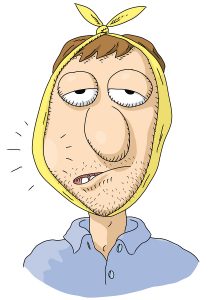In this blog we will look at the extra-articular causes of trismus. Extra-articular refers to the area outside of the immediate Temporomandibular Joint (TMJ) I.e., external to the articular disc, condyle and articular fossa of the skull. Please see the previous blog which was posted on Trismus – Part Two, 2015 for a description of this area.
The extra-articular causes are:
1) A fracture of the mandible not involving the condyle (the area at the top
of the mandible). Please see the last blog which discusses the condyle.
The fracture may occur because of trauma to the face or jaw.
Or it may include a fracture of another area, in the middle third of the face I.e., zygomatic arch; the thin arch of bone that forms a bridge between the cheekbone and the temporal bone on each side of the skull.
2) Post-surgical edema (swelling) of the mandible. This may be caused by removal of the lower wisdom teeth or from other local surgery.
3) After giving a certain type of injection with local anaesthetic which is used to numb the lower molar teeth. This is known as the inferior alveolar nerve block. This type of injection may affect the medial pterygoid muscle which runs along where the injection is given. Trismus caused by an injection does not usually last longer than two weeks.
4) If ones mouth is open too long I.e., a long dental appointment (root canal treatment). Due to the prolonged opening, the muscles are contracting for long periods of time, resulting in trismus.
5) A hematoma following an injection in the area of the medial pterygoid muscle. This is a localized swelling that is filled with blood caused by a break in the wall of a blood vessel. It occurs if the needle nicks the muscle tissue or a blood vessel and causes internal bleeding.
6) Acute infection of the oral tissues involving the buccal space or muscles of mastication. The buccal space is a fascial space also known as a ‘potential’ space in the cheek. It can be caused by an odontogenic infection (infection originating from a tooth) or due to pericoronitis (infection originating from the gums. Please see the four part series of blogs on pericoronitis, which were posted between July 21st, 2015 and August 21st, 2015.
7) Tetanus. This is also known as lockjaw. It is an infection characterized by muscle spasms.
8) TMJ dysfunction: myofascial pain. This is basically pain that is muscular in origin. This occurs when the muscle is contracted repeatedly. When the muscles that are affected are the ones which relate to the TMJ I.e., the medial pterygoid.
9) Local muscle soreness may also result from clenching or grinding (bruxism) of the teeth.
10) Fibrosis of a surrounding area. This is the thickening and scarring of connective tissue which usually occurs as the result of an injury. It is a reparative or reactive process due to an injury.
11) A tumor in the jaw area (of soft tissue or bone).
12) Radiation therapy to the head and neck. Ten to forty percent of individuals who receive radiation will develop trismus.
13) Autoimmune diseases I.e., Lupus/central nervous system disorders. These can affect the whole body.
In the next and last blog on trismus, we will look at the prevention and treatment of trismus…until then.
Dr. F. Keshavarz Dentistry, Brampton’s Gentle Dentist





